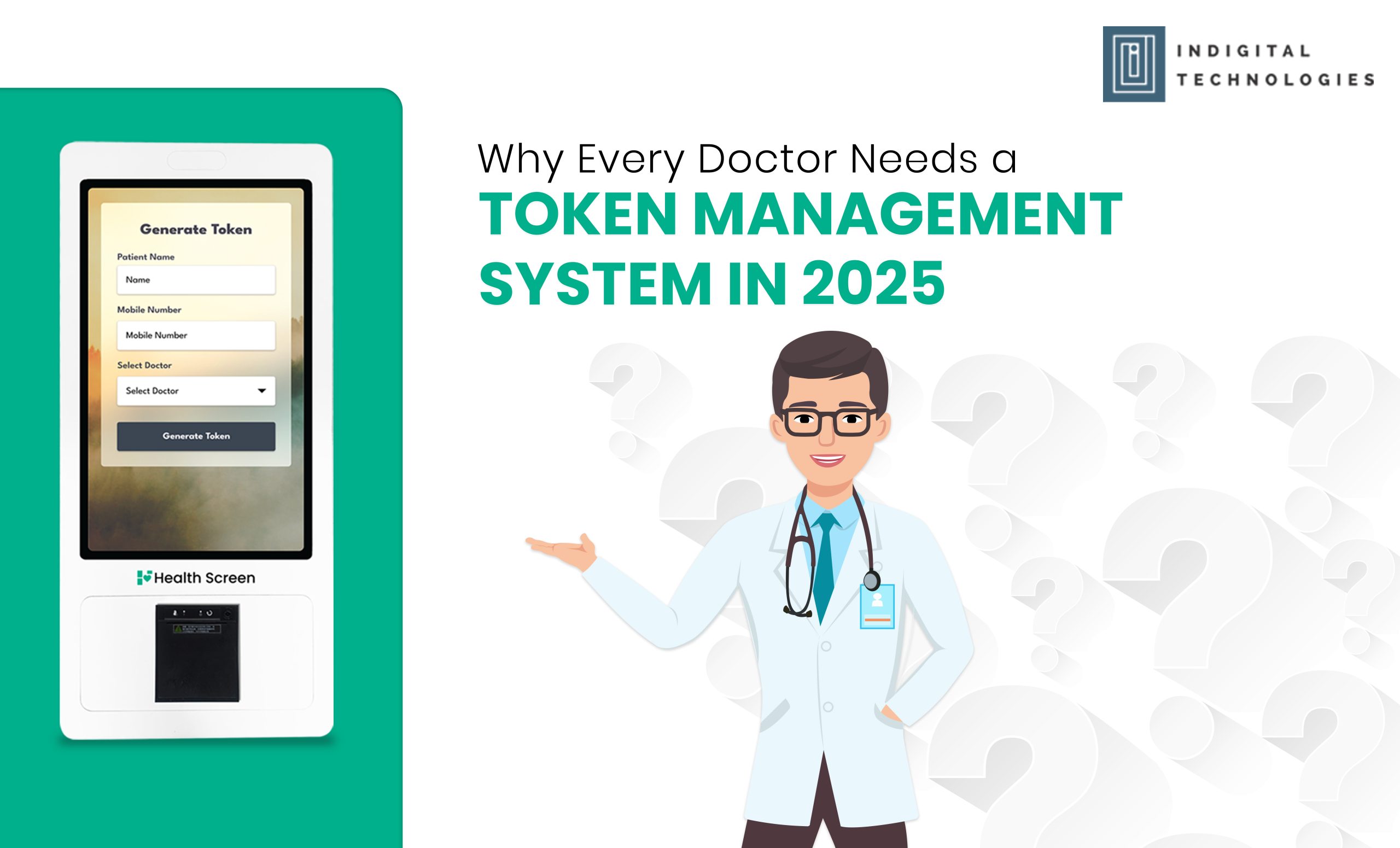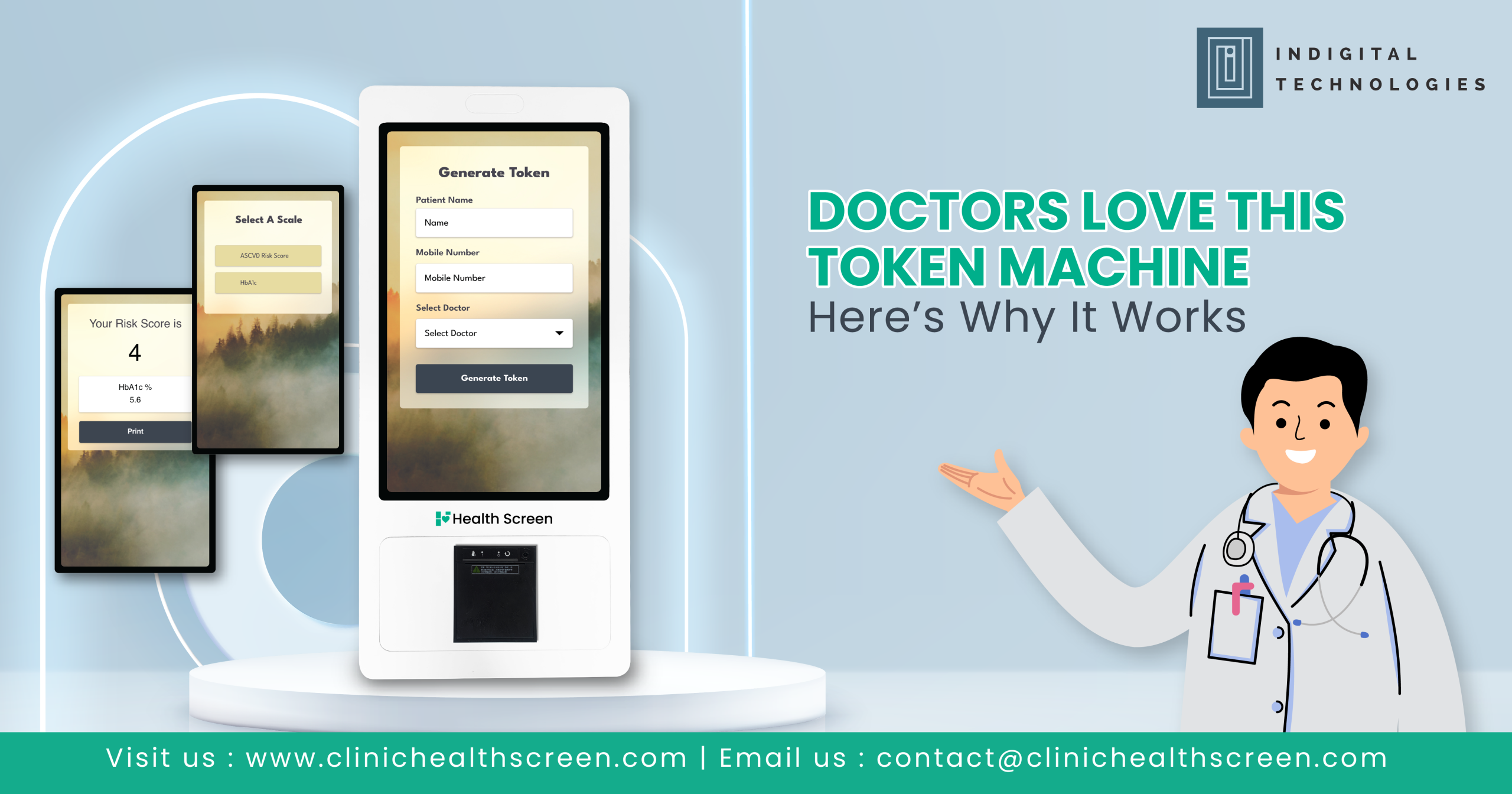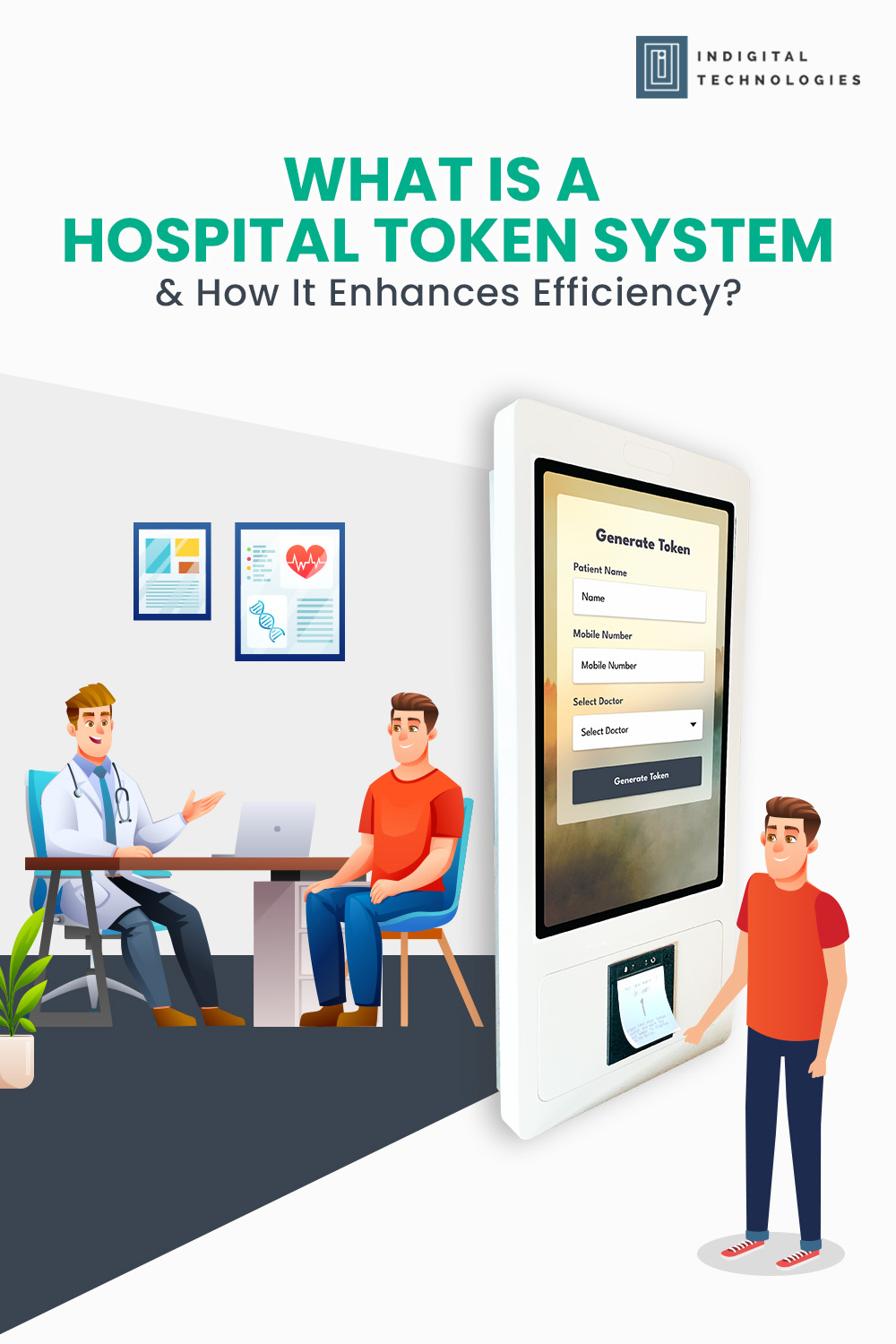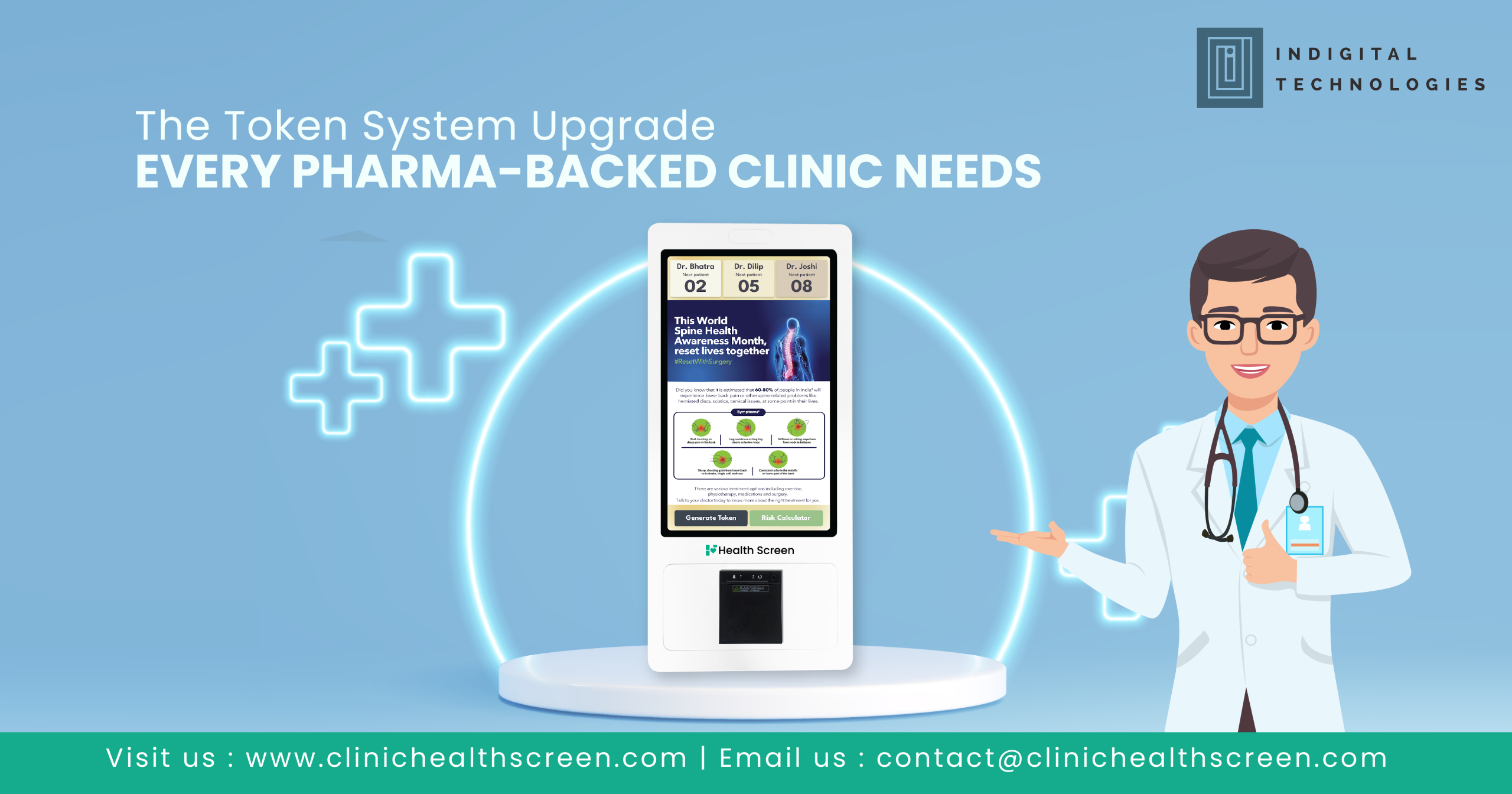As the healthcare landscape continues to evolve in 2025, patients expect more than just good clinical outcomes — they expect timely service, transparent processes, and a stress-free clinic experience. For doctors, balancing medical expertise with administrative efficiency is no easy task, especially when faced with long queues, irregular patient flow, and time pressure.
This is where a Token Management System (TMS) becomes not just helpful, but essential. More than a queue solution, a TMS is a powerful tool that allows doctors to regain control over their practice flow, manage patient expectations, and deliver care in a more structured, scalable, and patient-friendly way.
In this blog, we explore why every doctor — whether in a solo practice or a busy hospital OPD — needs a token system in 2025 and how it’s rapidly becoming the standard for modern clinical efficiency.
The Problem with Traditional Queuing
Manual queues still dominate in many clinics, leading to:
- Overcrowded waiting areas
- Constant interruptions to check “how long will it take?”
- Patient dissatisfaction due to unpredictability
- Unbalanced consultation time (some patients get rushed, others wait too long)
- Burnout for doctors due to uneven workflow
In an age where almost everything is digitally streamlined — from banking to grocery shopping — healthcare cannot afford to stay behind.
What Is a Token Management System?
A Token Management System is a digital platform that issues, organizes, and manages patient turn-taking in a clinic or hospital. Patients receive tokens on arrival (via kiosk, mobile QR, or reception), and are then called forward in a transparent, logical order.
Modern systems include:
- Real-time displays in waiting areas
- SMS/app notifications
- Doctor-side dashboards
- Queue prioritization and scheduling controls
- Integration with other clinical systems like EMRs or billing
Why It’s a Must-Have in 2025
Let’s explore key reasons why a token system is no longer a luxury — it’s a necessity for doctors in 2025:
1. Enhanced Time Management
With a structured queue in place, doctors:
- Always know who’s next
- Can anticipate complex or follow-up cases
- Avoid time lost in calling or searching for patients
- Maintain a consistent consultation rhythm
This control over pacing leads to higher efficiency and better patient focus.
2. Less Overcrowding, More Calm
Token systems stagger patient arrivals and reduce crowding in waiting areas. This:
- Improves air circulation and clinic hygiene
- Creates a calmer environment
- Reduces anxiety for children, elderly, and high-risk patients
Post-pandemic sensitivity to space and safety remains high — and patients notice the difference.
3. Improved Patient Satisfaction
Patients hate ambiguity. A token system:
- Shows real-time updates
- Communicates expected wait time
- Sends alerts as their turn approaches
This predictability builds trust. Happy patients are more likely to return and refer others.
4. Streamlined Workflow for Staff
With automation handling queues, clinic staff:
- Spend less time answering the same questions
- Have more time to manage records, assist doctors, and guide patients
- Work in a more predictable, less stressful environment
For multi-doctor setups, staff coordination becomes much easier with centralized token dashboards.
5. Easy Integration with Other Systems
In 2025, token systems often sync with:
- Electronic Medical Records (EMR)
- Appointment booking platforms
- Feedback forms
- Patient education displays
- Billing systems
This interconnectivity reduces duplication and improves the overall clinic workflow.
6. Analytics to Improve Practice
Token systems track useful metrics like:
- Daily footfall
- Average consultation time per patient
- Peak hours
- No-show patterns
- Patient wait time trends
Doctors and clinic managers can use this data to:
- Adjust appointment slots
- Allocate staff better
- Identify bottlenecks and fix them
7. Scalability as Practice Grows
Whether you’re:
- Expanding your clinic
- Adding another doctor
- Introducing lab or pharmacy services
- Opening a second location
A token system can scale with you — managing separate queues, routing patients, and syncing across locations.
8. Adaptability to Indian Healthcare Environment
Modern token systems in India are designed with local realities in mind:
- Regional language support
- QR-based token generation
- Compatibility with mobile phones (even without apps)
- Offline fallback during internet outages
This ensures that patients of all backgrounds — from tech-savvy youth to elderly villagers — can benefit.
9. Reduced No-Show and Drop-Off Rates
Some systems alert patients when their turn is nearing, reducing walkouts. Others provide:
- Estimated wait time
- SMS links to live queue status
- Friendly nudges if the patient is late
This level of communication helps keep the schedule intact and improves throughput.
10. Competitive Differentiation
In a saturated healthcare market, experience matters. A doctor who offers:
- Shorter wait times
- Organized scheduling
- Transparent communication
…automatically stands out. A TMS creates a professional impression — showing patients that their time is respected and their care journey is valued.
Use Cases: Who Can Benefit Most?
| Practice Type | Token System Benefit |
| Single-doctor OPD | Structured flow, reduced crowding |
| Multispecialty clinic | Multi-queue support, better coordination |
| Pediatric or Geriatric care | Less waiting stress, appointment control |
| Urban clinics with high footfall | Faster throughput, real-time analytics |
| Semi-urban clinics | Regional language & offline compatibility |
What to Look for in a 2025-Ready Token System
| Feature | Reason |
| Doctor-side dashboard | Enables control over flow and pace |
| Mobile & SMS integration | Keeps patients informed and engaged |
| EMR or billing integration | Reduces manual entry, speeds up process |
| Multi-language support | Enhances accessibility |
| Customizable flow paths | Adapts to your unique workflow |
| Scalable infrastructure | Grows with your clinic or practice |
| Analytics dashboard | Drives data-backed decisions |
Final Thoughts
As the healthcare ecosystem in India continues its digital shift, doctors who embrace intelligent tools like token management systems are better equipped to deliver faster, smarter, and more patient-centric care.
A TMS doesn’t just manage queues — it manages expectations, efficiency, and experience. In 2025, it’s not a “nice-to-have.” It’s an operational essential — the quiet technology that makes a loud difference in how modern healthcare is delivered.





